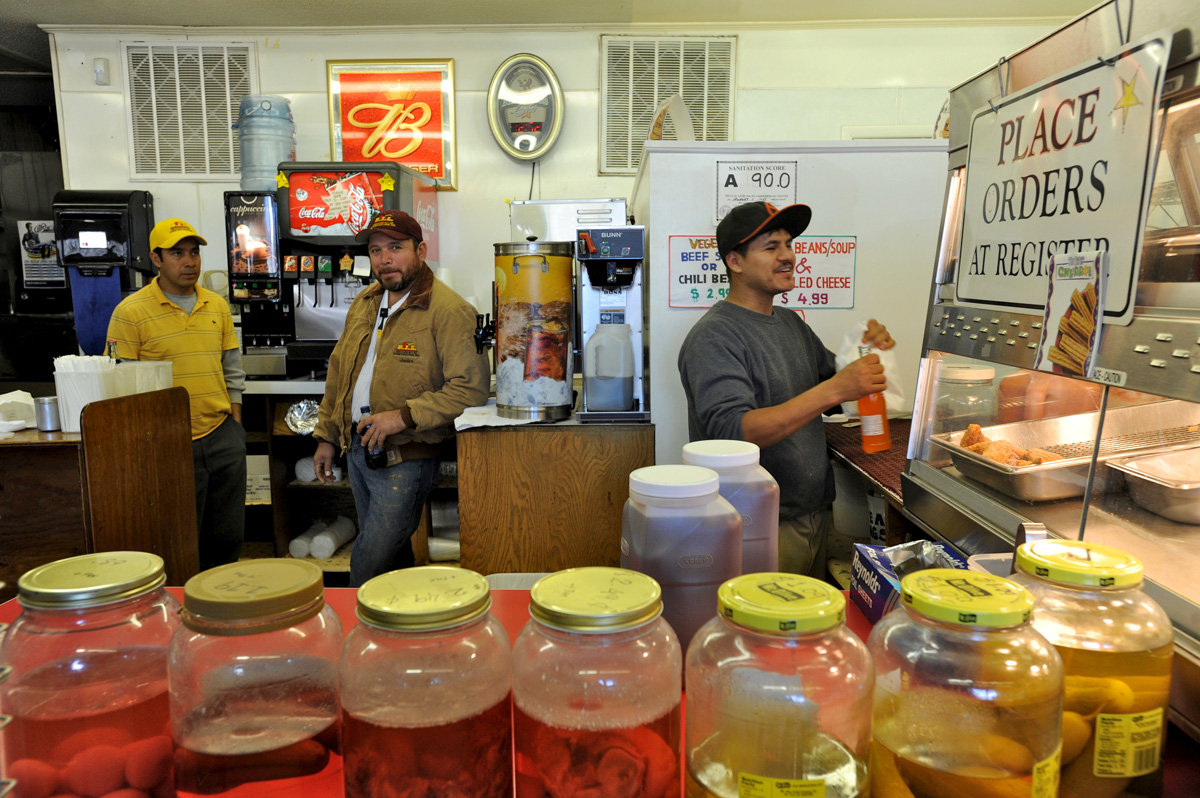This is an excerpt from Thank You Please Come Again: How Gas Stations Feed & Fuel the American South, a new book from contributing photographer Kate Medley. Published by Bitter Southerner, you can buy it it here.

Ten miles or so past the last stoplight in Hillsborough, North Carolina, a panoply of hand-painted signs dotted the roadside for the Farm & Garden Center: VEGETABLES, JELLY, LIVE PLANTS, LOCAL LAMB, BEER, BAIT. So I pulled off to gas up and was greeted by not just those, but a shop dog named Parker.
Inside, an older Black woman donned a plastic hair covering in case of rain. A young Latinx couple purchased last-minute party provisions. Two white farmers seemingly shopped only for conversation. Peach hand pies, Bojangles biscuits pirated from an intown location, and organic beef came home with me that day in 2008.
Four years later, I began documenting gas stations across the South, interviewing and photographing the people who run the shops, cook the food, and buy the goods. There is an egalitarian nature to the gas station, integral to the lives of people in every socioeconomic bracket if you live in the South, especially in rural areas.
Working as a photojournalist, it became my way of studying this complex region, the people who live here, and how the populations and priorities are shifting. New Yorkers have bodegas. The South has gas stations.




Clockwise from top left: Lu Xuyng at Nana’s Fastfood & Seafood in Charlotte, Calvander Food Mart in Chapel Hill, Durham’s Heritage Grill, and Frazier’s Store in Wake Forest.
These one-stops were created to provide fuel for people as they moved their cars and farm equipment across land. In those early days, folks typically built gas stations onto existing general stores and pharmacies located in the middle of town. As cars became more affordable and commonplace by the 1930s, drive-in filling stations appeared along highways and bypasses.
Gas station amenities have since shifted. Up until the 1980s, you could get your car fully serviced in the garages of gas stations; now the garages are largely gone, and in their place are stores filled with fried chicken, taquitos, and Monster Energy drinks.
We’ve changed too. Our politics may be polarized, our economics stratified, our neighborhoods segregated, and our rhetoric strained, but still nearly everyone regularly passes through these same commercial spaces. We fill up the tank. We relieve our bladders. We grab a cold one on the way home from work. We may rub elbows as we pass the ketchup. In an increasingly atomized world of mediated interactions, we have fewer and fewer communal spaces.

I wanted to explore not only these shared and seemingly sacred corridors, but the types of cooking that might be happening in the backs of gas stations. I took to the long road, both figuratively and literally, logging thousands of miles across 11 states in the Deep South. People sent recommendations along the way, but most of my 150 stops were impromptu.
The stations I stopped at compelled me to dig deeper and to wonder: Who lives here? What do they do for work? What do they eat? What do they believe? What is the pace of the day? What is important in their America? Their South?
Some gas station grills feature emerging immigrant foodways. Others provide hot plate lunches for farmworkers, predawn biscuits for hunters, easily portable meals for laborers and travelers, and basic groceries in towns without a Kroger or Publix.
I trained my attention on the businesses that provided a portrait of a place. That quality is hard to define–more a vibe than a formula. But when you feel it, you know in your gut.


Marta Miranda serves up fried chicken inside a Shell station in Charlotte. Though the business is now called Market Express, locals still know it as Quik Shoppe. Miranda is originally from El Salvador and has been frying chicken here for 18 years.
Kate Medley is a Durham-based visual journalist and filmmaker documenting the American South. Her work focuses on storytelling and environmental portraiture, often exploring issues of social justice and the shifting politics of this region. See more at her website.


